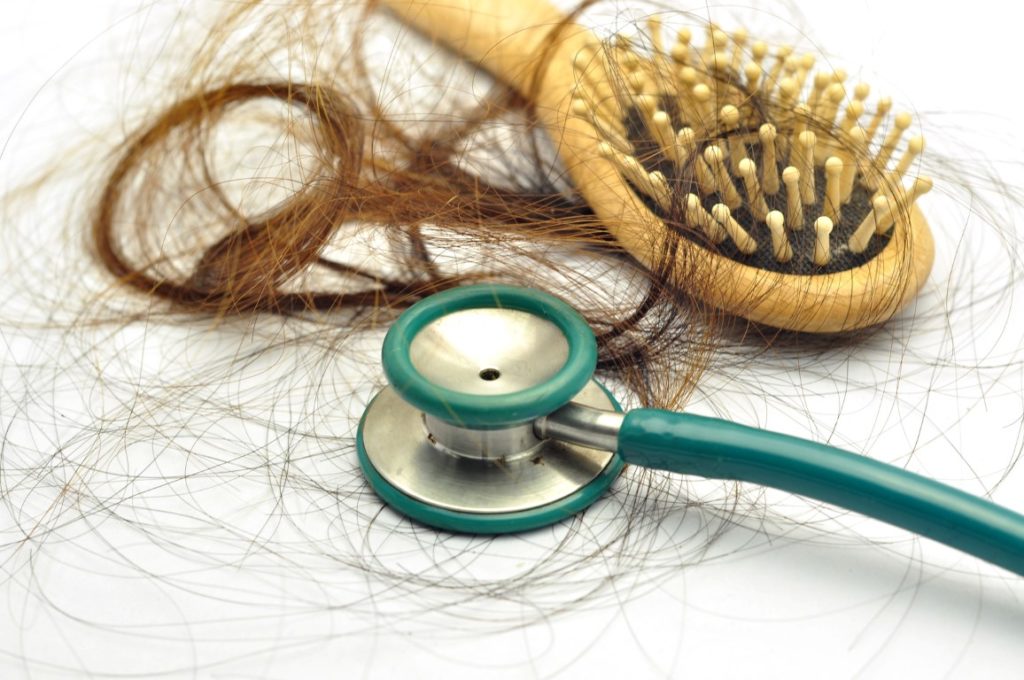Hair loss, also known as alopecia or baldness refers to a loss of hair from part of the head or body. Typically at least the head is involved. The severity of hair loss can vary from a small area to the entire body. Typically inflammation or scarring is not present.Hair loss in some people causes psychological distress.
Hair is made up of a protein called keratin that is produced in hair follicles in the outer layer of skin. As follicles produce new hair cells, old cells are being pushed out through the surface of the skin at the rate of about six inches a year.
Each follicle has its own life cycle that can be influenced by age, disease, and a wide variety of other factors. This life cycle is divided into three phases:
- Anagen – active hair growth that lasts between two to six years
- Catagen – transitional hair growth that lasts two to three weeks
- Telogen – resting phase that lasts about two to three months; at the end of the resting phase the hair is shed and a new hair replaces it and the growing cycle starts again.
Types of hair loss ( also called alopecia )
- Involutional alopecia is a natural condition in which the hair gradually thins with age.
- Androgenic alopecia is a genetic condition that can affect both men and women.
- Alopecia areata often starts suddenly and causes patchy hair loss in children and young adults. This condition may result in complete baldness (alopecia totalis).
- Alopecia universalis causes all body hair to fall out, including the eyebrows, eyelashes, and pubic hair.
- Trichotillomania seen most frequently in children, is a psychological disorder in which a person pulls out one’s own hair.
- Telogen effluvium is temporary hair thinning over the scalp that occurs because of changes in the growth cycle of hair.
how to control hair loss
One of the most effective home remedies to control hair loss is using Fenugreek / Methi. Seeds of fenugreek are rich in hormone antecedents that help in hair growth and repairs hair follicles.
Soak the fenugreek seeds in water overnight and grind it in the next morning to make a fine paste. Apply this fenugreek seed paste to the scalp and hairs and let it set for 30 minutes to one hour, covering your hairs with a shower cap so that it does not get dry. Rinse off with plenty of water, no need of using a cleanser or shampoo. Follow this process of treatment at least twice a week for a month to see effective results.




